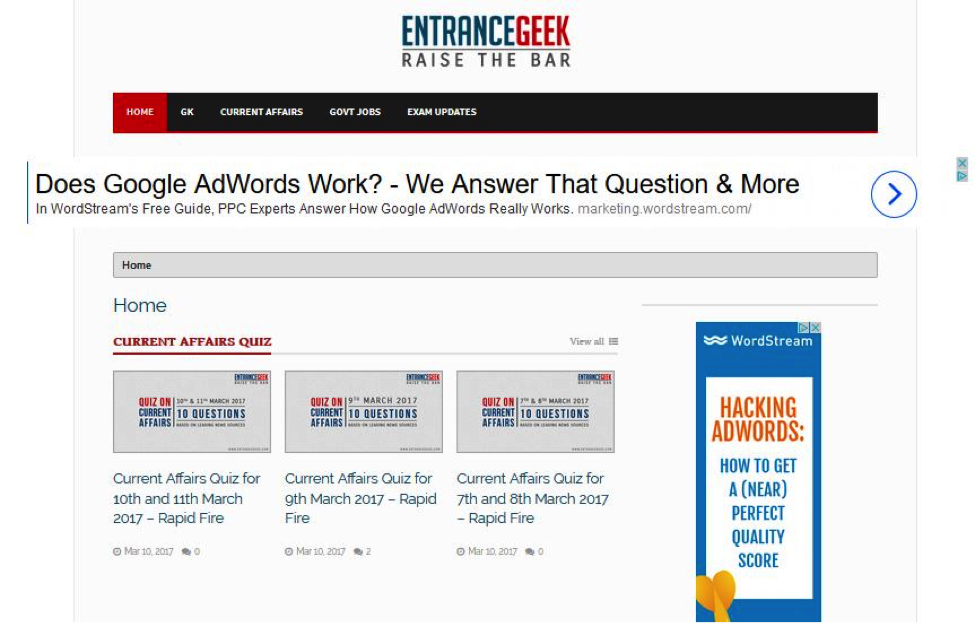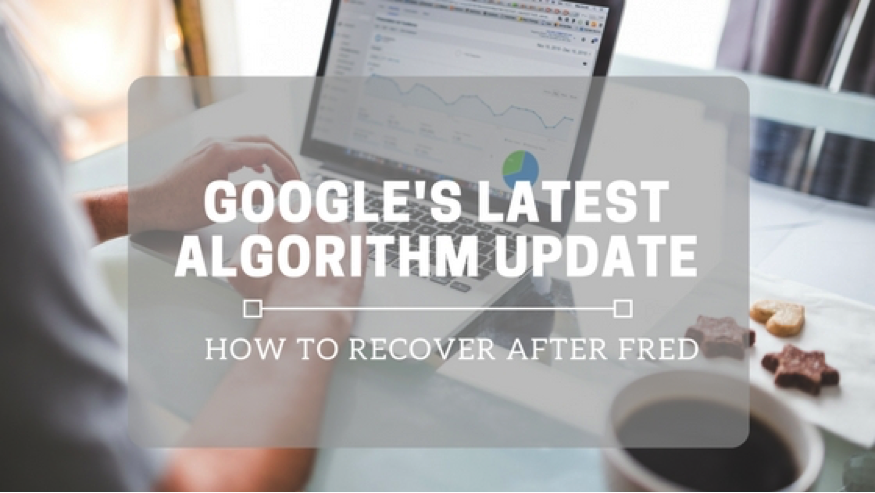In the beginning of March 2017, reports of a new Google algorithm update hit the internet. Two months later, these reports have still not been officially confirmed by Google. However, the effects of the so-called ‘Fred’ update are definitely being seen.
In fact, many affected site shave reported a 50 to 90 percent decline in traffic!
If your website has been targeted by Fred, you need to know two things:
- What is Fred targeting?
- How can I recover?
What Does Fred Target?
After taking a look at many different websites that have been affected, a common pattern started to develop. The great majority of the affected websites were targeted towards generating revenue, not towards quality content.
They had lots of ads or affiliate links, but provided little to no benefit to the user.
The owner of one site reported a 60% drop in organic traffic from March 8th, 2017. His website matches the pattern we mentioned above, as you can see in the image below:

Multiple ads above the fold, low quality content, and little effort in design is all rolled into one package here. This website and many like it have seen the effects of Google’s Fred update.
While the algorithm update remains unconfirmed, the evidence is clear: the Fred update is targeting low-quality sites designed for the sole purpose of generating revenue.
So, if you’ve seen a drop in your organic traffic since March 8th, what can you do to recover?
4 Ways to Recover From Fred
1. Focus on the Users
User-focused content will increase your website’s value. So instead of creating content around keywords, fit your content to the needs of your readers. Answer legitimate questions that people are searching for. Don’t just rewrite the same generic content over and over again.
Provide real value to your readers, and Google will reward you.
2. Balance Ads with Text
While Google has removed the ad limit, this does not mean you can plaster ads all over your site. This is not visually appealing, and is likely to get you penalized by Google’s new algorithm update.
The amount of ads you should place on each page is not easy to define. However, a good rule of thumb is to make sure that your content is more prominent than ads.
3. Design Your Website for People
Website design may not directly affect your Google search rankings (that we know of). However, making your website visually appealing will improve your bounce rate. The more people that stay on your website, the better your ranking will be.
One way to make your website more appealing is to add a variety of media content, such as images, videos, infographics, etc. These types of content are also extremely shareable.
4. Build Your Social Following
Presenting and promoting your website on social media increases your visibility online. In this way, you won’t have to rely solely on search results to get new traffic. Instead, you’ll be able to attract people to your website through social media sharing.
Conclusion
Google’s algorithm update may not be confirmed, but it is affecting many websites. If you’ve seen a drop in traffic, it’s time to take a serious look at the quality of your content.
Remember, your website is not just a place to house ads. Providin a real benefit to your readers will increase your website’s value and improve your rank.
